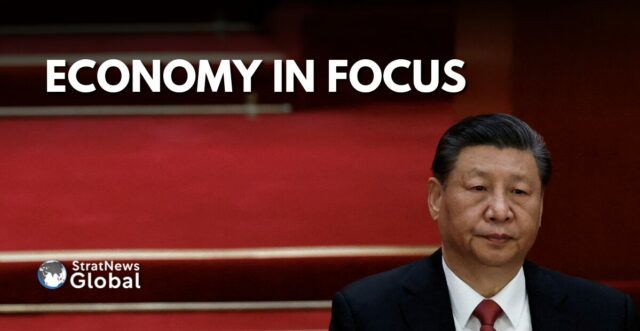China’s leaders aim to boost confidence in the economy during a crucial meeting next week. However, conflicting objectives like stimulating growth while reducing debt may hinder significant progress.
Meeting Objectives
The Communist Party leadership will discuss efforts to:
- Promote advanced manufacturing
- Revise the tax system to reduce debt risks
- Manage the ongoing property crisis
- Boost domestic consumption
- Revitalise the private sector
Business, employment, and consumer sentiment are currently near record lows. The four-day plenum starting on Monday aims to address fears that China’s economy is headed for prolonged low growth or potential deflation, similar to Japan’s experience since the 1990s.
Despite the meeting’s importance, China’s leaders have not clearly outlined how they plan to:
- Cut debt and stimulate growth
- Encourage consumer spending while directing resources to producers and infrastructure
- Increase urbanisation while revitalising rural areas
Reform Challenges
Several overlapping risks are complicating China’s reform efforts, including an ageing population, property bubbles, local government debt, and financial risks. Implementing necessary reforms will be challenging, as noted by a policy adviser who preferred to remain anonymous.
The meeting was expected last autumn but was delayed until now without explanation. Historically, such gatherings have led to significant shifts, such as Deng Xiaoping’s reform and opening policies in 1978 and Xi Jinping’s consolidation of power with the scrapping of presidential term limits in 2018.
Economic Growth Goals
Policymakers aim to double China’s economy by 2035, requiring an average annual growth of 4.7%. However, the International Monetary Fund predicts a slowdown to 3.3% by 2029 from 5.2% last year. Reform is crucial to avoid this decline.
Economists have urged China to reduce its reliance on debt-fuelled investment and exports, instead promoting growth by stimulating household spending. This would require transferring resources from government and businesses to households through social welfare and higher wages, conflicting with debt-reduction and industrial goals.
Social and Economic Policies
Long-standing ambitions like dismantling the Mao-era internal passport system and raising the retirement age would risk social instability. Although Beijing claims to have an open-door policy for foreign investment, foreign companies report issues such as raids, arrests, and state support for domestic competitors.
Reform Implementation
Mark Williams, chief Asia economist at Capital Economics, anticipates the meeting will conclude with numerous reform pledges but few implementation details. The party-controlled parliament focused on “new productive forces” to drive technological breakthroughs and high growth. However, trade barriers from the U.S., Europe, and some emerging economies complicate these efforts.
Industrial policies also limit funding for consumer-oriented measures like raising unemployment benefits or pensions for the ageing population. Alicia Garcia-Herrero, chief Asia-Pacific economist at Natixis, warns that deflationary pressures may persist without strong demand support.
China’s private sector feels pressured as the Communist Party tightens its grip on the economy. The government aims to support both state-owned and private companies, yet market mechanisms struggle to play a decisive role due to strong governmental control.
With Inputs from Reuters
Research Associate at StratNewsGlobal, A keen observer of #China and Foreign Affairs. Writer, Weibo Trends, Analyst.
Twitter: @resham_sng





